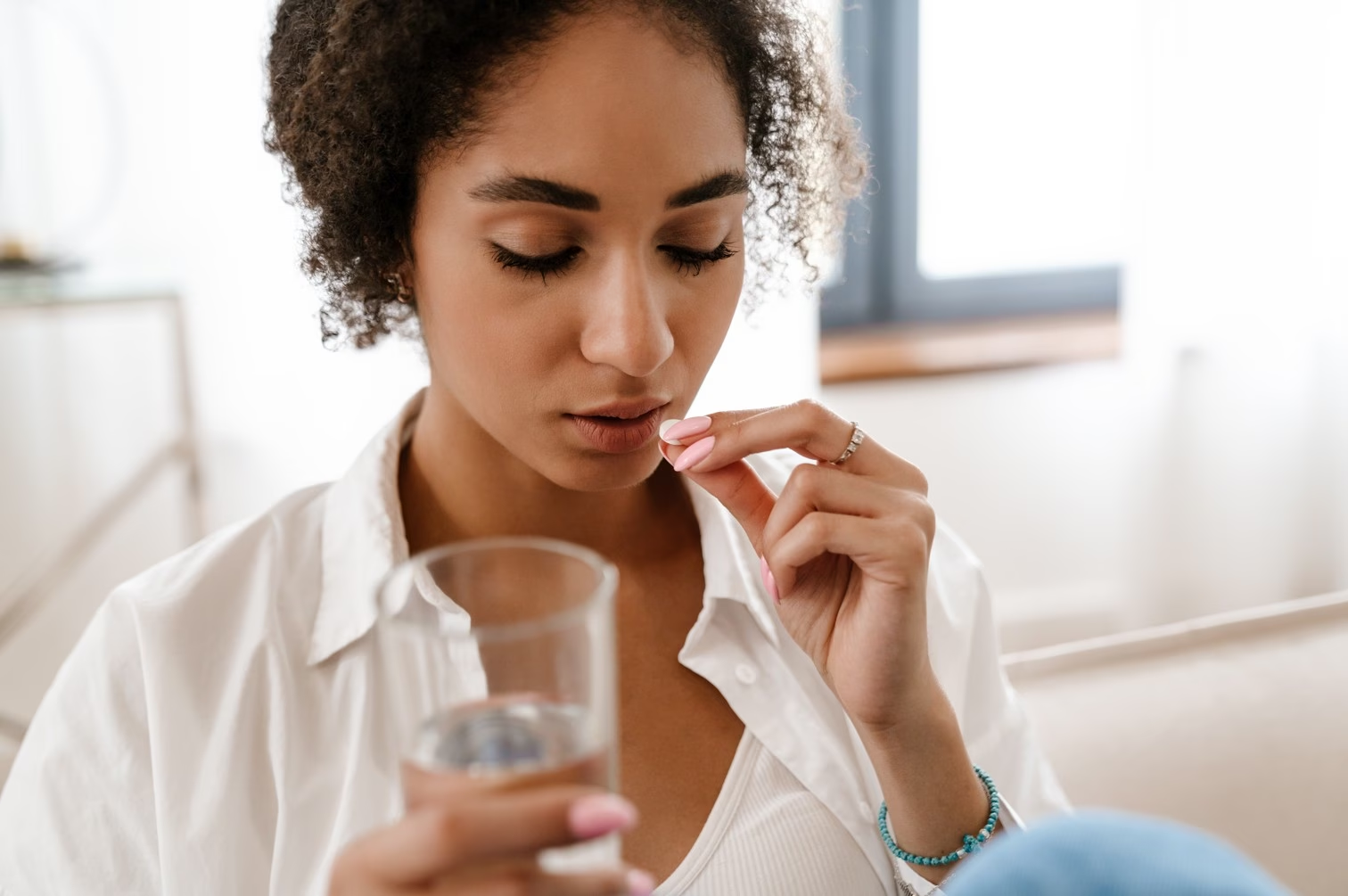
What are PMS and PMDD?
Premenstrual Syndrome (PMS) is a term used for a broad range of physical and emotional symptoms that occur in the two weeks before your period. These can include mood swings, anxiety, irritability, tiredness, sleep issues, bloating, breast tenderness, headaches, changes in appetite or sex drive, and even skin and hair changes. About 90% of women experience some degree of PMS, with one-third experiencing symptoms that interfere with daily life.
Premenstrual Dysphoric Disorder (PMDD) is a much more severe form of PMS. Affecting around 3–5% of women of reproductive age, PMDD can cause extreme mood swings, irritability, depression, anxiety, lethargy, and a marked loss of interest in daily activities. For those with PMDD, symptoms are intense enough to disrupt work, relationships, and quality of life, and may include distressing thoughts such as suicidal ideation.
Why does PMS and PMDD happen?
The exact cause of PMS and PMDD is not fully understood, but it is linked to hormonal changes—especially progesterone and oestradiol—during the luteal phase of the menstrual cycle. Serotonin, a brain chemical, may also play a role, with some individuals more sensitive to its fluctuations.
When to Get Help
If your PMS or PMDD symptoms are overwhelming, persistent, or interfere with your daily life, you are not alone. Our clinic specialises in individualised care for these conditions, offering women support, guidance, and evidence-based treatment plans. We encourage you to keep a symptom diary and share it with your healthcare professional, as this helps with diagnosis and tailored management.

Common Symptoms
Symptom Type
PMS (mild-moderate)
PMDD (severe)
Emotional
Mood swings, anxiety, irritability
Anger, depression, aggression, severe anxiety
Physical
Bloating, headaches, tiredness
Migraine, joint pain, severe fatigue
Behavioural
Appetite changes, sleep disruption
Loss of interest in activities, difficulty concentrating
Symptoms for both typically start 1–2 weeks before your period and resolve soon after it begins.

Treatment Options
- Lifestyle Changes: Healthy eating, increased physical activity, stress management, and adequate sleep can benefit mild PMS and are often recommended before medications.
- Medications: Those with severe PMDD may benefit from antidepressants (SSRIs), certain contraceptive pills, or pain relievers for physical symptoms.
- Therapies: Cognitive-behavioural therapy, talking therapies, and peer support can be very helpful, both emotionally and practically.
- Tracking & Support: Understanding your cycle, joining support groups, and working closely with our clinic can empower you to manage symptoms and reduce their impact.
What's new for PMS Slynd
Slynd (drospirenone 4mg) is a newer progestogen-only pill (POP) available in the UK and other regions, offering several advantages for women with severe PMS who require or prefer a non-oestrogen-based contraceptive.
Key Features of Slynd for Severe PMS:
- Superior Ovulation Suppression: Slynd suppresses ovulation far more reliably (80-90%) than previous POPs (often around 50% suppression).
- Unique Progestogen: Contains drospirenone, which has anti-androgenic and anti-mineralocorticoid properties. This means it can help reduce water retention, bloating, and possibly acne and hirsutism, and may also have a more favourable impact on mood compared to other progestogens.
- Benefits for PMS: There is anecdotal and theoretical support, and some early evidence, to suggest that drospirenone-containing pills—including Slynd—may help with physical PMS symptoms like breast tenderness, bloating, headaches, and perhaps even mood swings. Patient and clinician reports have described symptom improvements, particularly when Slynd is used continuously without the placebo (hormone-free) interval, which may help to avoid the negative effects of hormone withdrawal.
- Flexible Dosing Window: Slynd is the only POP with a forgiving 24-hour missed pill window, making it easier for users compared to traditional POPs, which must be taken within a much narrower timeframe.
- No Oestrogen: Suitable for women who cannot (or prefer not to) take oestrogen-containing pills due to side effects or contraindications (e.g., migraine with aura, thrombosis risk).
What the Evidence Says:
- While no large-scale clinical trials have specifically studied Slynd for PMS, its underlying pharmacology, user reports, and early clinical experience suggest that it is a promising option for severe PMS, especially in those sensitive to oestrogen or with perimenopausal symptoms.


Self-Care Tips
- Track your cycles and symptoms to spot patterns.
- Consider joining peer support or online communities.
- Talk openly with trusted friends, family, or professionals.
- Maintain a healthy routine, including nutritious food and regular exercise.
Your Experience Matters
PMS and PMDD are real, and your symptoms deserve to be taken seriously.
Patients experiencing PMS and PMDD deserve compassion and validation—their symptoms should never be minimized or dismissed as simply period pain.
Book an Appointment
If you think you may have PMS or PMDD, or your symptoms are affecting your life, reach out to schedule a consultation with us. We’ll work with you in a personalised way to improve your wellbeing.
- Empowering women with knowledge, support, and comprehensive care for PMS and PMDD—because your mental and physical health matter.
- For urgent support, please contact your GP or emergency services or 111 or The crisis team if you have thoughts of harming yourself.
- If you think you may have PMS or PMDD, or your symptoms are affecting your life, reach out to schedule a consultation with our team. We’ll work with you in a personalised way to improve your wellbeing.
- Empowering women with knowledge, support, and comprehensive care for PMS and PMDD—because your mental and physical health matter.
- For urgent support, please contact your GP or emergency services if you have thoughts of harming yourself or the crisis team via 111.

